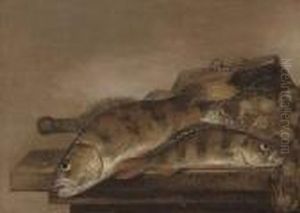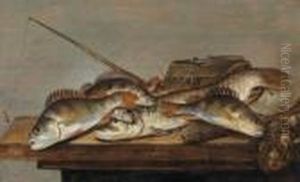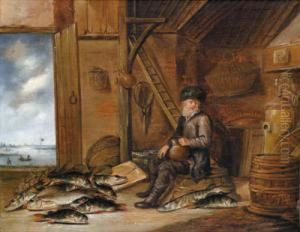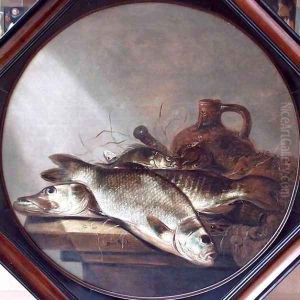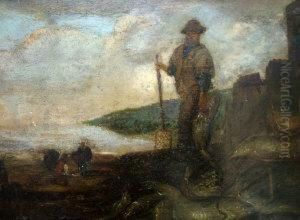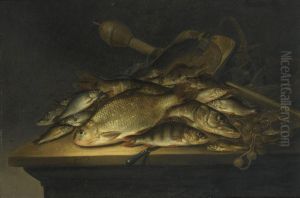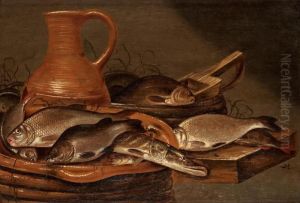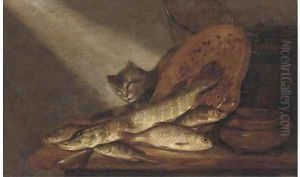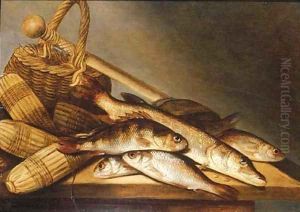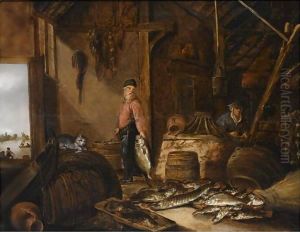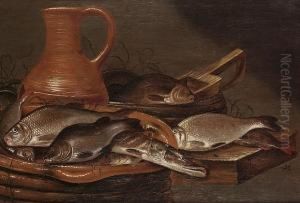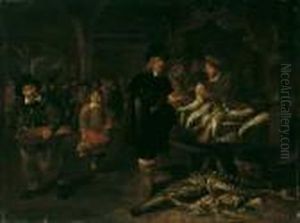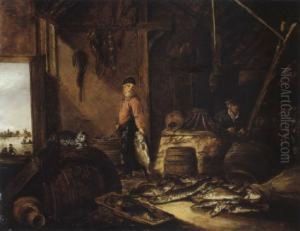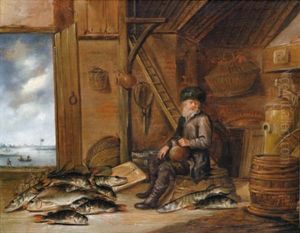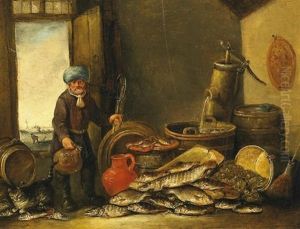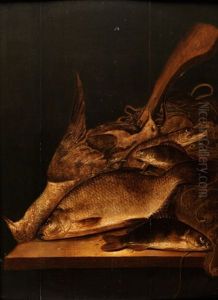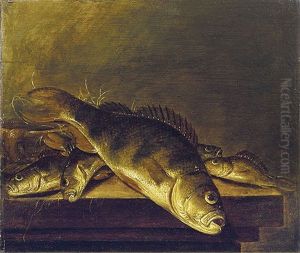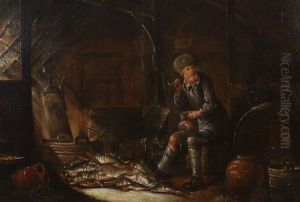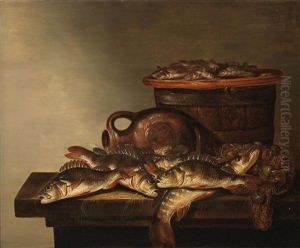Pieter de Putter Paintings
Pieter de Putter was a Dutch painter, primarily known for his still life and genre paintings. Born in The Hague in 1600, de Putter developed a distinctive style characterized by a meticulous approach to detail and a subtle use of color. Although there is not a wealth of information about his early life or training, it is believed that he was influenced by the works of other Dutch Golden Age artists, who were renowned for their still lifes and genre scenes.
During his career, de Putter painted a variety of subjects, but he was particularly adept at depicting fish and still lifes with fish, which became his trademark. His compositions often featured carefully arranged marine creatures, sometimes accompanied by fishing gear, within atmospheric settings that showcased his skill in rendering textures and capturing the interplay of light and shadow.
De Putter’s works were appreciated for their realism and the lifelike quality of the subjects he portrayed. Despite his talent, he did not achieve the same level of fame as some of his contemporaries, and as a result, his works were sometimes attributed to other artists. Nevertheless, his paintings have come to be valued for their contribution to the Dutch still life genre, and they offer a glimpse into the cultural and economic importance of the fishing industry in the Netherlands during the 17th century.
Pieter de Putter's life and career were relatively short; he died in 1659, leaving behind a modest but important body of work. Today, his paintings can be found in various art museums and collections around the world, where they continue to be studied and admired for their beauty and historical significance.




